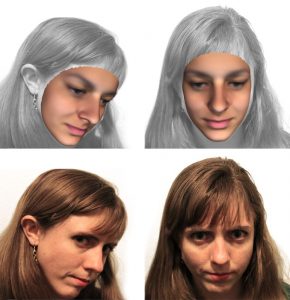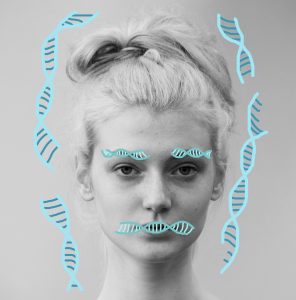Imagine a world where passports, licenses, and social security cards were no longer needed for identification because the appearance of a person could be accurately reconstructed from their DNA alone. The truth is, that kind of future may not be that far off.
For several years now, scientists have been working to identify specific genes and the role they play in the facial appearance of an individual with the purpose of recreating faces with DNA alone. Certain genetic traits such as eye color, hair color, skin color, and even general face shape can be predicted fairly accurately with genetics, but would you be able to identify an individual using a reconstruction of their face that was created using DNA alone? For now, the answer is, not with 100% certainty.
The means through which genetics create a face is extremely complex. There could be hundreds of factors and several genes that determine the distance between your eyes or the shape of your nose for example. Two people with similar genetic makeup could look completely different. This is known as going from genotype (your genes) to phenotype (your observable characteristics). In order to figure out what goes into creating a face from DNA, scientists need copious amounts of data from thousands of subjects. Several researchers at Pennsylvania State University are working to tackle this feat using 3D imaging and DNA sequencing to link the subtle facial differences of nearly 600 subjects to their genetic makeup. They were able to compile enough data to predict the appearance of a young woman using her 23andMe samples, creating a striking resemblance. But the fact is, that the science still isn’t completely exact and tends to create a generalized image of the persons race rather than an exact replica of their face. The technique certainly isn’t ready to be used for forensics or to pick a suspect from a line up.

The facial reconstruction of a young woman using genetic information alone.
Recreating faces from DNA still has many applicable uses. While it’s not yet reliable enough to use for suspect identification with crime, it could be used as a tool for forensic artists. If DNA is available at a crime scene, it could be used to confirm the traits of a suspect when eye-witness accounts were uncertain or varied. The technique has also proved widely popular amongst historians, allowing scientists to recreate the faces of extinct human relatives and ancient individuals. Several reconstructions of Neanderthals have been made using skull shape and DNA, and in 2015 the reconstruction of one of the first Native Americans, named Naia by scientists, raised questions about the true heritage of ancient Americans. Naia’s reconstruction looked vastly different from contemporary Native Americans, thought to be descended from Asian cultures, and suggested a difference in migration patterns and ancestry than previously believed to be true.

Science is still several years away from being able to accurately portray your face based on your DNA, but it’s getting closer and closer every year. The creation of such technology would mean incredible things for ancestry, history, crime, and more, but it would also mean that keeping our DNA private would be even more important than ever. Our genes are what make us look the way we do, but they could also allow someone else to know exactly what we look like without ever having met us. That’s extremely powerful and personal and another reason why our DNA is so important to who we are.

